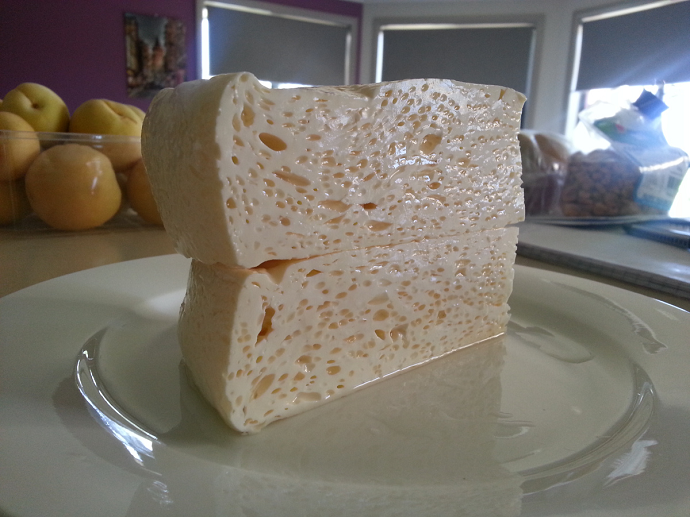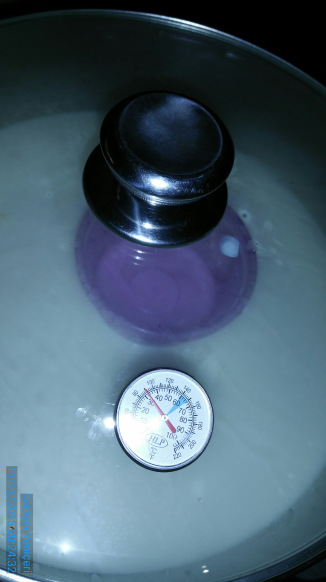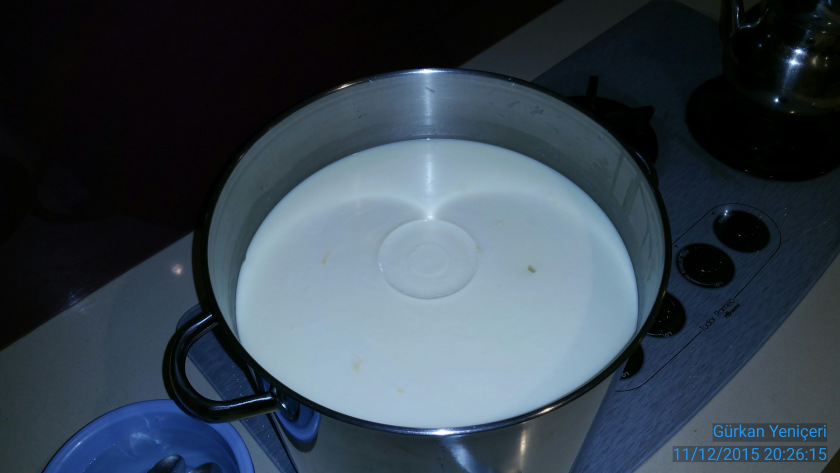
Getting Consistency in Cheesemaking
The seasonal differences in the milk flora sometimes create unwanted results in the end product. There are things you can implement other than changing the name of the cheese by dancing around the cheesemaking steps. A good artisanal cheesemaker should always be on top of the recipe but also react to the sudden unforeseen changes and adjust along the way. It is like continues improvement and risk mitigation process for the engineer minded cheesemakers out there. It is mindfulness for Zen minded people too. (Hi James)

First of all, our parameters to measure the quality of the end product is slightly wider than the commercial production. Your customers should have already learnt that. And to be honest, I would prefer slightly different aroma and texture rather than buying a factory cheese that is consistently sh**ty. Excuse the French but they have good cheeses.
Every time you take your milk in the vat, there are certain amounts of lactic bacteria, mould and yeast already exist in it. As you are the master of this vat, you conduct your orchestra to play a tune that you want by controlling the acidity, time, moisture levels etc.

If you have developed a strong starter culture and trust that it will give you the acidity curve you wanted, heat your milk gently to 67C and keep it at that for 30 minutes. This gentle pasteurization technique kills many of the bacteria while keeping the enzymes mostly intact and opens up space for your local and strong starter culture. Cool it down quickly to desired temperature and pitch your culture.
If pasteurization is not your cup of tea, than add some starter culture to your milking bucket. At the milking temperatures they will thrive and out win the local guys. They will increase the acidity creating a hostile environment for E.coli. If you are not making cheese soon after milking, store it at a cool room or a fridge but not freeze it. Ideally, you should be making cheese immediately after milking with this technique.
Flocculation technique is one to be mastered if you want to hit consistent moisture levels at every make. Combined with mother culture preparation, you will get your consistency.

Flocculation determines when the milk is starting to coagulate after adding the rennet. Prepare your chronometer and a sterilized little cup to float on the milk. Add the rennet at a desired pH level and start the chronometer. Put the little cup on the milk. Nudge the cup every minute once and you will notice it will glide across the milk without any friction. At around 15 minutes mark, the cup will not glide easily and you will see a stopping action like the cup is on brakes. Check the chronometer and note the time, do not stop the chronometer. That is your flocculation time. Based on the cheese you are making, find the floc multiplier and multiply the floc time with it. Let say 15 minutes passed till you added the rennet and flocculation happened. You are making feta so floc multiplier is 4. 15X4=60 minutes. At 60 minutes mark, you should cut the curd. You didn’t stop the chronometer which is a good thing because the 60 minutes cutting time starts when you add the rennet to the milk.
I usually leave the cup on the milk and that is why I have this circle indentation mark on the curd photos from time to time.

Patience. Acidity is not developing, temperatures are not rising, curd is looking sad or acidity going haywire and you are worrying. Should you increase temperature just a little on the stove? Should you remove some whey and add hot water? Should you fill the sink with icy water and dunk the vat in it? Should you go into draining the curds and press quickly? All these methods will have some effect on the cheese for sure. Have patience young Skywalker. Just watch the curd. Take notes. Learn from your mistakes. Before taking any action, think about why it happened and what mitigation strategies you can implement now. What you should do or shouldn’t do next time to end up at the same crossroad.
If you are using store bought pasteurized, homogenized milk there are things you can do as well. First of all I hope your milk is unhomogenized. If you can’t find unhomogenized and if your only option is P/H milk then do this:
•Add Calcium Chloride to the milk when it is cold.
•Add some butter milk or cream. Make sure you write down how much you’ve added.
•Heat to slightly higher then rennetting temperature. Note the temp in your notebook.
•Transfer it from bucket to bucket from up high by splashing a little. Do this about 10 times. Make sure buckets are sterile.
This procedure will reduce the water just a little (evaporation), it will mix the cream with milk, it will oxygenate the milk and it will get the broken protein chains to fix with the CaCl2 action. And your cheese will have a better texture and aroma at the end.
Preparing mother culture also gives you consistency and makes sure that your cultures are still alive. If you are buying sachets of cultures or prepared your own and froze it, you can still do this. Just buy a good organic goat’s milk. Pasteurize it in the boiler in its original packaging. Cool it quickly in ice water and pitch your desired thermo or meso cultures at their working temperature. Incubate it overnight and start making cheese the next day. Some of my cultures are in the freezer and way passed their expiry date. If I don’t prepare mother culture like this, I have no idea if they are working or not. Also using active, live cultures at their peak gives you the best results and reduces the milk ripening times about 15 minutes.
Mentioned couple of times above is the note taking. It is your Dairy Diary, write as much detail as you can like pH, TA, temperatures, milk source, starter cultures, times, processes and everything. Only then you can refer back and continuously improve the recipe, notice differences and achieve success (meaning “perfect cheese” and following that is “happy customers” if you are selling).
Happy Cheesemaking
About Gürkan Yeniçeri
I took up the hobby of food production a while back and look into ways to incorporate these into my families busy life. Although having a day job and 2 kids consumes most of the useful daylight hours, I managed to run 60sqm veggie garden, about 45 fruit trees and shrubs, 2 beehives, 2 aquaponics and a 6sqm perennial veg garden. I am now taking the PDC course and dreaming to implement these in slightly larger scale in the future. I wrote 3 books about cheesemaking, natural beekeeping and aquaponics in Turkish to allow enthusiasts access real information in their native language, I have blogs too.
I make all my fertilizer out of compost, worm farm, weeds and carps caught from the lake combining them with whey and rock dust.
I am living in Canberra and giving workshops here about cheesemaking, growing nutrient dense produce, butter making, beekeeping and aquaponics.
My FB Page: https://www.facebook.com/artisancheesemaker
Cheesemaking blog: https://homecheesemaker.wordpress.com/
Turkish blog: https://artizanpeynirci.blogspot.com













domestic is first class